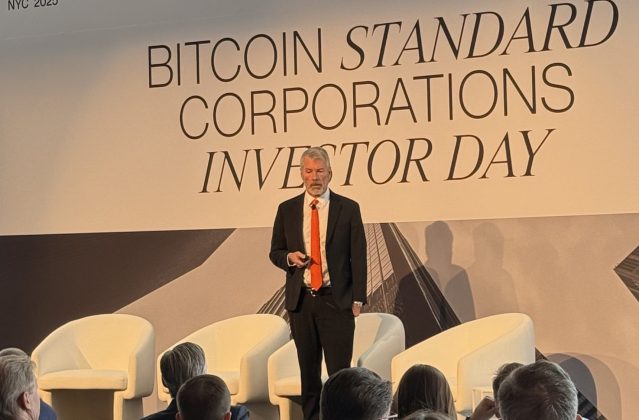Highlights:
- Miners are expected to sell up to $5 billion worth of Bitcoin post-halving and experience an annual revenue loss of $10 billion. This could cause selling pressure lasting for four to six months.
- Due to inscription activity, miners received $109 million in rewards on April 20 as the hash price reached its highest level since April 2022, at $182 PH/s. It dropped to $81 PH/s following the halving event.
- Public Bitcoin mining companies collectively held more than 46.2k BTC as of the end of March. The combined Bitcoin reserves are back to the levels from June 2022. In comparison, the all-time high of miner reserves stands at 48,000 BTC.
Forecast
A recent CoinShares Report noted a recurring trend across halving cycles. Miners tend to increase their capital expenditure in anticipation of reduced block rewards, leading to a positive deviation from the historical hash rate log trendline. After the halving, however, the hash rate usually falls about 9% below the trendline as less competitive miners are driven out of the market.

In the long term, miners will struggle to secure cheap electricity due to competition from tech giants such as Google and Amazon. The AI sector currently pays 3-4 times more for electricity than U.S. Bitcoin miners.
Sentiment
The 4th Bitcoin halving happened on the 20th of April. Bitcoin’s mining difficulty has reached a new record of 86.39 trillion. This has contributed to a drop in the hash price to $100 PH/s per day just before the halving. Even though the launch of the Rune Protocol increased the hash price to $182 PH/s on the halving day, the hash price thereafter dropped to $75 PH/s, lower than the pre-halving.

Analysis
As of Q4 2023, BTC’s current cost basis for 14 U.S. mining companies ranges from $15K to $40K per BTC. It averages at $24.7K. Since the reward for mining a block has now been halved, the cost basis for miners should roughly double. However, estimates for where exactly the break-even price for most miners lies differ. CryptoQuant CEO estimated that the Bitcoin break-even price would have to exceed $80K to maintain profitability after the halving, assuming a mining cost of 47K per BTC pre-halving. On the other hand, the CEO of Marathon Digital Holdings Inc. mentioned that the industry’s average break-even point would rise from $23K to $43K post-halving, marking an 87% increase in the cost per Bitcoin. Much of this uncertainty is related to the private mining industry, which does not publish data.

On a positive note for mining profitability, the rising popularity of a new inscription design called Runes has caused a spike in transaction fees. On the halving day, Bitcoin mining revenue reached a record high of $109 million, with transaction fees making up a 75.44% share due to Runes as well as the high demand for etching rate satoshis. However, this share dropped to 44% one day later. This suggests that Runes might not sustain high network fees for long after the initial hype subsides, as it did for Ordinals and BRC-20 tokens. Nonetheless, with the halving having reduced block rewards by 50%, the proportion of fees in total mining rewards will double, even conservatively. If miners increasingly depend on transaction fees instead of block subsidies, their revenue will become more volatile and increasingly dependent on trading and non-financial activity on the blockchain.








